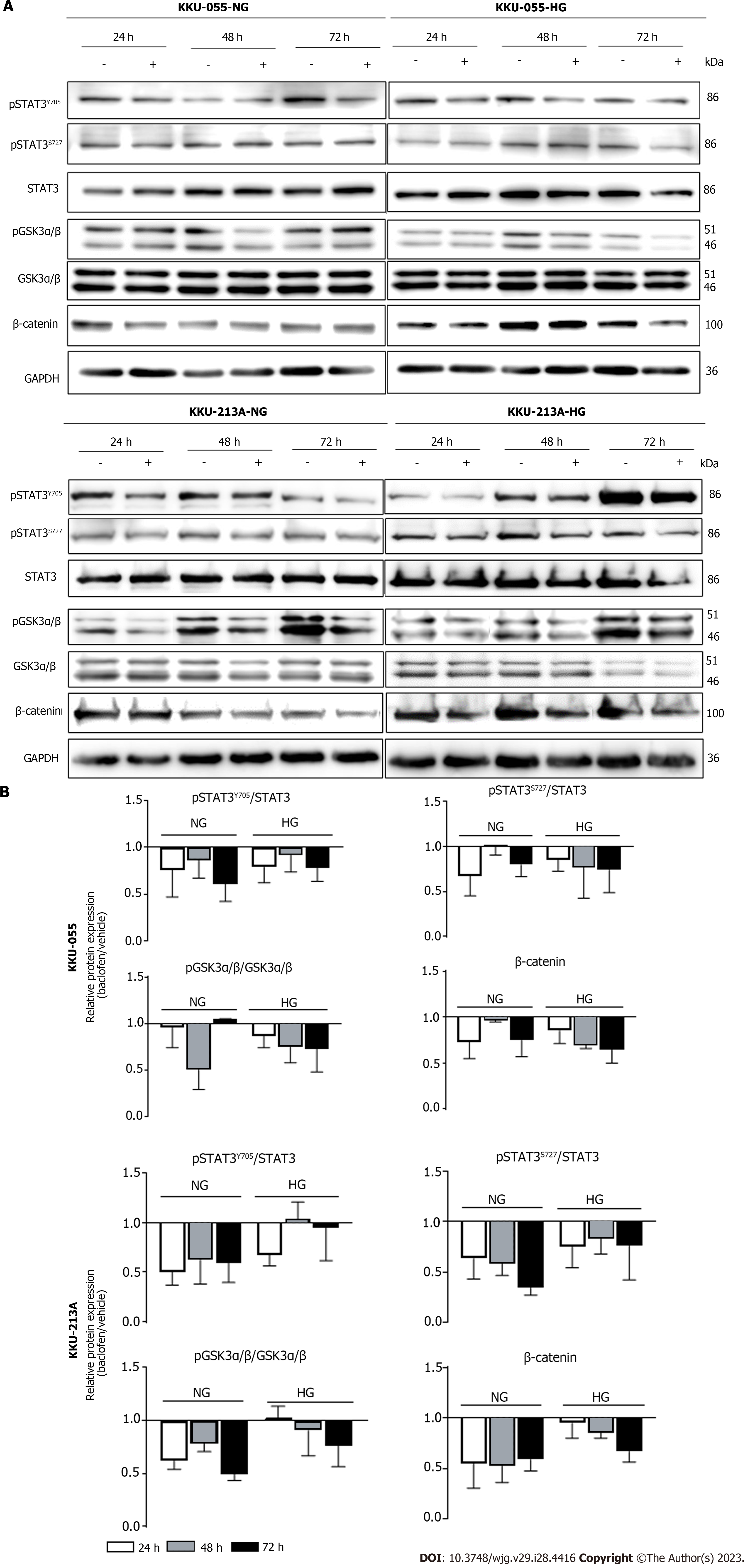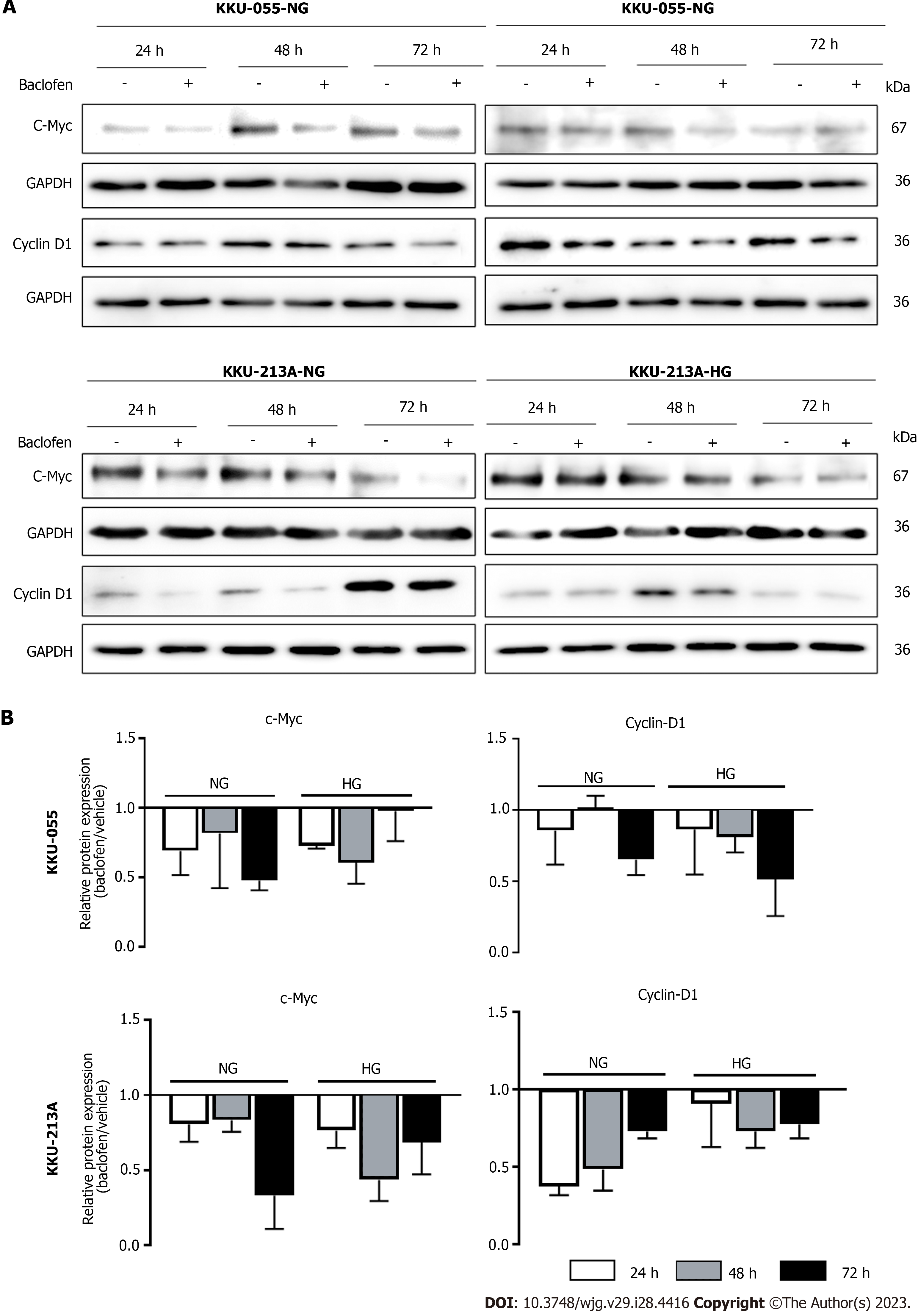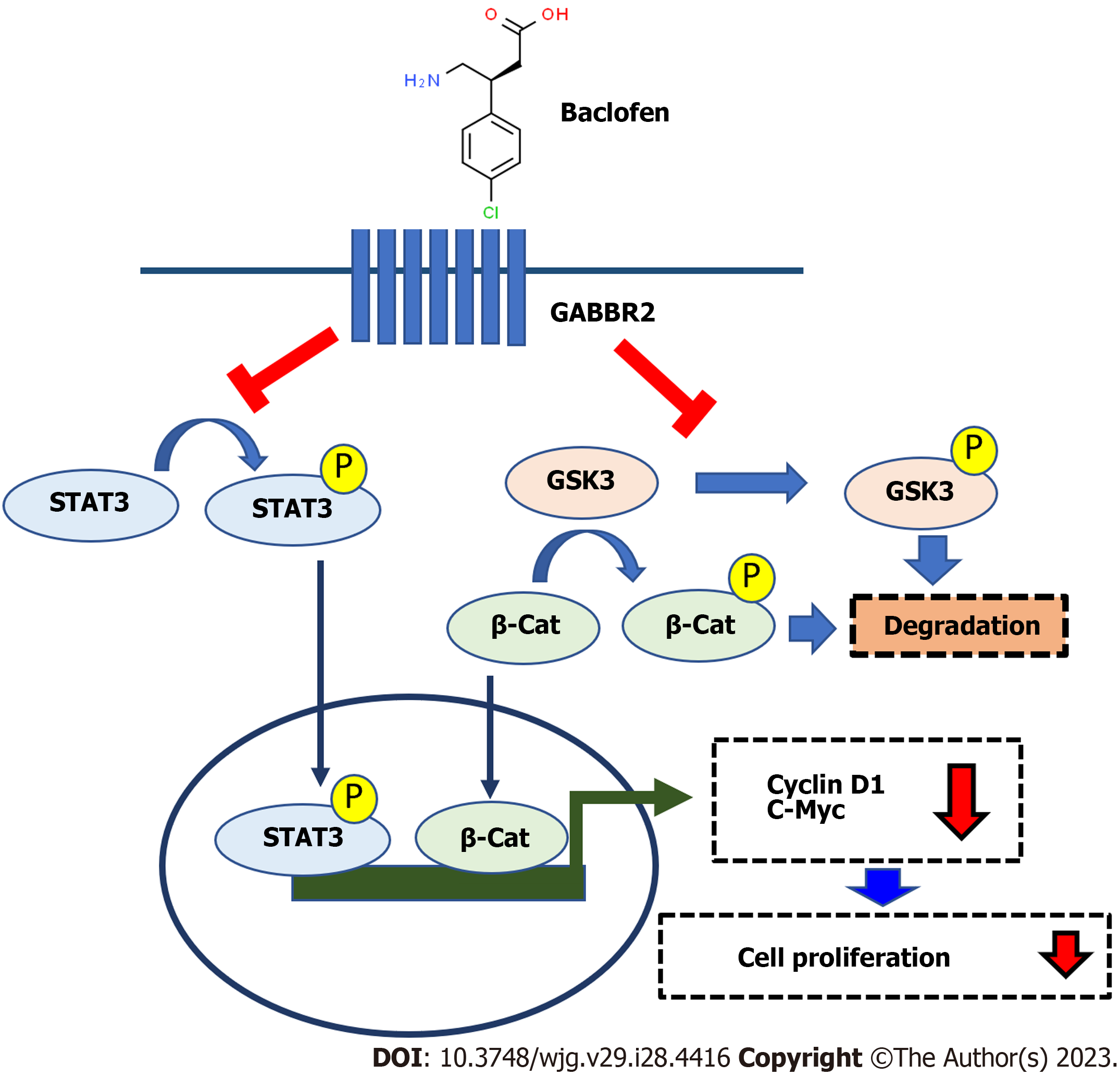Copyright
©The Author(s) 2023.
World J Gastroenterol. Jul 28, 2023; 29(28): 4416-4432
Published online Jul 28, 2023. doi: 10.3748/wjg.v29.i28.4416
Published online Jul 28, 2023. doi: 10.3748/wjg.v29.i28.4416
Figure 1 High glucose induces upregulation of γ-aminobutyric acid B2 receptor in cholangiocarcinoma.
A-C: The expression of γ-aminobutyric acid B2 receptor (GABBR2) in cholangiocarcinoma (CCA) cell lines, KKU-055 and KKU-213A, is dose-dependently upregulated by glucose at both RNA (A) and protein (B-C) levels; D and E: Immunocytofluorescence shows the membranous and cytoplasmic localizations of GABBR2 in CCA cells, and those cultured in high glucose show significantly higher mean fluorescent intensities; F-G: GABBR2 in tumor tissues from CCA patients with hyperglycemia is also upregulated compared with those from patients without diabetes mellitus. Presented data are the average of three biological replications with triplicated experiments. NG: Normal glucose; HG: High glucose; Glc: Glucose; DM: Diabetes mellitus; GABBR2: γ-aminobutyric acid B2 receptor; GAPDH: Glyceraldehyde-3-phosphate dehydrogenase.
Figure 2 Antiproliferative and anti-clonogenic effects of γ-aminobutyric acid-B receptor agonist.
A and B: Baclofen, a γ-aminobutyric acid-B receptor agonist, exerts significant antiproliferative effects on cholangiocarcinoma (CCA) cells in a dose-dependent (A) and time-dependent (B) manner; C and D: CCA cells cultured in high glucose condition (HG) are more sensitive to baclofen than those cultured in normal glucose (NG). Baclofen also shows anti-clonogenic effects on both NG and HG cells of CCA. Presented data are representatives of three biological replications of each triplicated experiment with the same trends of results. bP < 0.01, cP < 0.001. NG: Normal glucose; HG: High glucose.
Figure 3 Baclofen inhibits the glycogen synthase kinase 3/β-catenin and signal transducer and activator of transcription 3 pathways.
A and B: Phospho-kinase arrays reveal the inhibition of phosphorylation in multiple kinases and signal transducers; C: Glycogen synthase kinase 3 (GSK3)/β-catenin and signal transducer and activator of transcription 3 (STAT3) are included for further analysis as they are key pathways in cholangiocarcinoma (CCA) progression in which β-catenin and STAT3 are common targets of GSK3. RNA expression of γ-aminobutyric acid B2 receptor and that of STAT3 are significantly correlated in clinical CCA samples from Thai patients. HG: High glucose; GABBR2: γ-aminobutyric acid B2 receptor; GSK3: Glycogen synthase kinase 3; STAT3: Signal transducer and activator of transcription 3.
Figure 4 Baclofen suppresses the glycogen synthase kinase 3/β-catenin and signal transducer and activators of transcription 3 pathways.
A and B: Phosphorylation of glycogen synthase kinase 3 (GSK3) and signal transducer and activators of transcription 3 is decreased after baclofen treatment in both cholangiocarcinoma cell lines, both cultured in normal glucose and high glucose conditions. Total β-catenin protein is also decreased consistently with the decreased phosphorylated GSK3α/β. Western blots show the representative of three biological replications with the same trends of results. Band intensities are the average of three biological replications which are normalized using the intensities of glyceraldehyde-3-phosphate dehydrogenase for each experiment. The levels of phosphorylated forms are normalized with the total forms of their corresponding proteins. NG: Normal glucose; HG: High glucose; GAPDH: Glyceraldehyde-3-phosphate dehydrogenase; GSK3: Glycogen synthase kinase 3; STAT3: Signal transducer and activator of transcription 3.
Figure 5 Baclofen suppresses c-Myc and cyclin D1expression in cholangiocarcinoma cells.
A and B: The expression of c-Myc and cyclin D1, key proteins for cell proliferation, is suppressed in both cholangiocarcinoma cell lines after baclofen treatment. Western blots show the representatives of three biological replications with the same trends of results. Band intensities are the average of three biological replications which are normalized using the intensities of glyceraldehyde-3-phosphate dehydrogenase for each experiment. NG: Normal glucose; HG: High glucose; GAPDH: Glyceraldehyde-3-phosphate dehydrogenase.
Figure 6 Schematic summary of the effects of high glucose on γ-aminobutyric acid B2 receptor expression and the effects of baclofen on cholangiocarcinoma cells.
High glucose induces the expression of γ-aminobutyric acid B2 receptor (GABBR2) in cholangiocarcinoma (CCA) cells. The treatment of baclofen, a GABBR2 agonist, to CCA cells inhibits phosphorylation of glycogen synthase kinase 3, resulting in the activation of the kinase activity which further phosphorylates β-catenin. Phosphorylated β-catenin is subjected to degradation preventing its function on promoting cell proliferation via c-Myc and cyclin D1 expression. On the other hand, activated GABBR2 by baclofen also inhibits phosphorylation of signal transducer and activator of transcription 3 (STAT3). The inhibition of STAT3 phosphorylation also suppresses its functions as a transcription factor for c-Myc and cyclin D1 expression. Activating GABBR2 by baclofen, thus, suppresses the proliferation of CCA cells. GABBR2: γ-aminobutyric acid B2 receptor; GSK3: Glycogen synthase kinase 3; STAT3: Signal transducer and activator of transcription 3.
- Citation: Saengboonmee C, Sorin S, Sangkhamanon S, Chomphoo S, Indramanee S, Seubwai W, Thithuan K, Chiu CF, Okada S, Gingras MC, Wongkham S. γ-aminobutyric acid B2 receptor: A potential therapeutic target for cholangiocarcinoma in patients with diabetes mellitus. World J Gastroenterol 2023; 29(28): 4416-4432
- URL: https://www.wjgnet.com/1007-9327/full/v29/i28/4416.htm
- DOI: https://dx.doi.org/10.3748/wjg.v29.i28.4416














